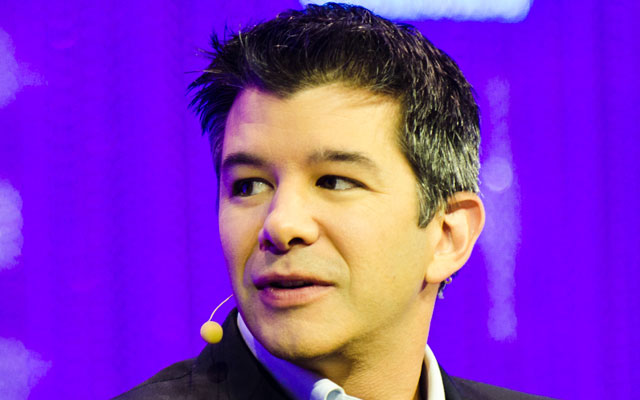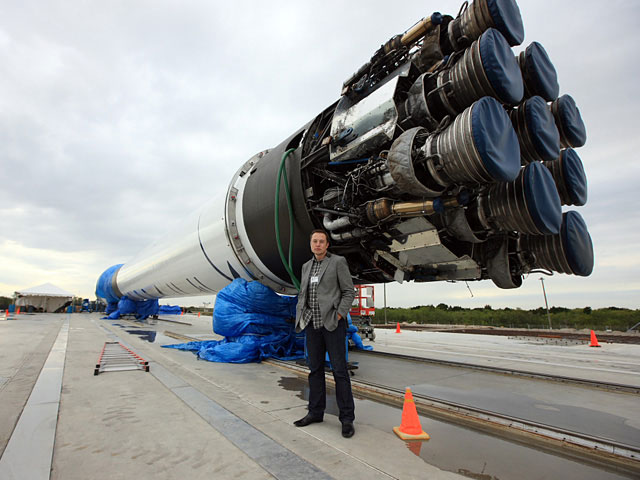
While Uber got shellacked for its link to US President Donald Trump, the electric car maker and sometimes-rival Tesla has comfortably weathered its association with a president who has lower approval ratings than any predecessor in his first days in office.
Uber Technologies lost customers and drivers and became the subject of a campaign on Twitter that encouraged people to delete their Uber apps. The opposition compelled Uber CEO Travis Kalanick to quit Trump’s strategic and policy forum.
Meanwhile, Tesla faced relatively minimal backlash, and there’s been no comparable effort to boycott the car maker’s products. Tesla CEO Elon Musk has said he has no plans to quit the committee.
The contrast is viewed as a double standard within Uber’s headquarters in San Francisco. In private conversations, senior management and investors have groused that Musk has emerged unscathed from his associations with a divisive president and his membership on the same business advisory group that Kalanick had to abandon, according to people involved in these discussions.
“That’s not representative of how we feel,” said Jill Hazelbaker, a spokeswoman for Uber. “No one working at Uber would want another company to experience what we have over the past few weeks.”
This wasn’t the first time Uber watched jealously as Musk sidestepped the very same obstacles encountered by the ride-hailing giant. In December, Uber deployed a small fleet of self-driving cars in San Francisco without applying for an autonomous vehicle licence. When the California department of motor vehicles came calling, Uber pointed to Tesla, saying it was only following the automaker’s lead. “What we are doing today is just like Tesla,” Anthony Levandowski, head of the company’s Advanced Technologies Group overseeing self-driving cars and other projects, said at the time.
Officials didn’t agree. The DMV revoked Uber’s car registrations, while Tesla drivers could continue letting their robotic cars guide them around town. Instead of filing the paperwork as more than 20 technology companies and car makers have — including Tesla, which does so for the autonomous system it’s testing but not for cars with Autopilot — Uber relocated its vehicles to Arizona.
Each company is shaped by the outsize reputation of its founding leader. Whereas Kalanick is seen as a pugnacious Ayn Rand fanboy who champions free markets, Musk is a whiz bringing rocket ships, electric cars, traffic-busting tunnels, solar energy and other futuristic goodies to humanity.
“Elon Musk absolutely has created the Tesla brand very much based on his personal brand,” said Daniel Binns, MD at Omnicom Group-owned consulting firm Interbrand. “There’s a huge amount of positive goodwill for the brand, and therefore, if there was any sense of negativity, they’d be able to deal with it.”
The Tesla brand — and by extension, Musk’s — represents “a noble ambition: the vision is to make the world more sustainable by providing renewable energy sources, cars and battery sources,” Binns said. “Uber doesn’t have that. It’s not known for being a mission-driven organisation.”
Tesla declined to comment. Uber’s Hazelbaker said: “We know we’ve made mistakes in the past, and we are working hard to serve riders, drivers and cities around the world.”
Of course, it’s a lot easier for people to demonstrate their dismay with Uber. They can delete an account and switch to a competing app. Drivers can change allegiances to Lyft and get a US$1 000 sign-up bonus to boot.
The US rival ran a national ad campaign to capitalise on this conception of Uber as cold and uncaring. Lyft’s darling status among liberals is another source of consternation for the Uber camp, people familiar with the situation said. That’s because Lyft’s board includes representatives of funds founded by two Trump allies, Peter Thiel and Carl Icahn.
Unlike with Uber, it’s tougher to dump a $70 000 all-electric, partially autonomous car with few peers on the road. “Uber is a household name,” said Bradley Tusk, an Uber advisor and former mayoral campaign manager for Michael Bloomberg. “People interact with it every day, so it is just more familiar to them. Tesla is a great car, but the number of people who interact with Tesla in their daily lives is infinitesimal. They’re not analogous.”
Still, Americans weren’t boycotting such ubiquitous American brands as Pepsi or Walmart, whose chiefs also sit on the council.
Uber’s early scandals shaped the company’s image in the minds of many people. It’s haunted by such events as the use of surge pricing during Hurricane Sandy and other emergencies, as well as its deployment of underhanded tactics against competitors that backfired.
Even today, it’s engaged in lawsuits contending that it takes advantage of drivers by not giving them employment benefits or allowing unions.
Lyft faces many similar challenges. Last month, Uber settled a Federal Trade Commission suit, without admitting guilt, over claims that it misled drivers about how much they could earn.
Last week’s Trump ordeal traces its roots to one of the earliest sources of controversy for the company: surge pricing. This time, people were upset that Uber turned it off. On 28 January, Uber posted a tweet saying it was suspending fare increases at a New York City airport shortly after cabbies protesting Trump’s immigration ban were set to disperse. Uber had wanted to avoid giving the impression of profiteering from a protest, but instead, it was labelled a scab for purportedly trying to break the strike.

The outrage was fuelled by Kalanick’s perceived friendliness toward the Trump administration, thanks to the advisory council and a soft statement he put out after the president signed an executive order targeting immigrants from seven majority-Muslim countries.
The #DeleteUber movement got celebrity endorsements from Girls creator Lena Dunham, Star Trek actor George Taeki and Modern Family’s Jesse Tyler Ferguson.
More than 200 000 people removed the Uber app from their phones in a week, a significant increase over the norm, a person familiar with the matter has said. This would amount to at least 2% of all active users in the US. However, Uber ended the week with more customers than it lost, the person said.
Uber could have used a friend in the White House. Its continued skirmishes with regulators across the US would have likely benefited from the attention of a president who favours less regulation. But on 2 February, Kalanick called Trump to say he was leaving the advisory council. Uber put out a series of increasingly strongly worded statements opposing Trump’s refugee ban and committed $3m to help its drivers who were affected by the order.
Customers and drivers achieved victory simply by following the playbook the company had given them. For years, Uber has effectively rallied its fans to put pressure on governments to further the company’s agenda. The tactic was used to defeat a measure by New York City mayor Bill de Blasio in 2015 that would have crippled the ride-hailing app’s growth there.
Uber’s Jeff Jones, who joined last year from US retailer Target where he was chief marketing officer, is one person tasked with helping rehabilitate the company’s reputation. Another is Tusk, who advises many technology start-ups in addition to Uber. He said the company responded wisely when the public’s reaction reached a point it couldn’t ignore: “When that moment comes, it makes sense to speak out and act on it. In Uber’s case, so many of their drivers are immigrants; it made a lot of sense.” — (c) 2017 Bloomberg LP




